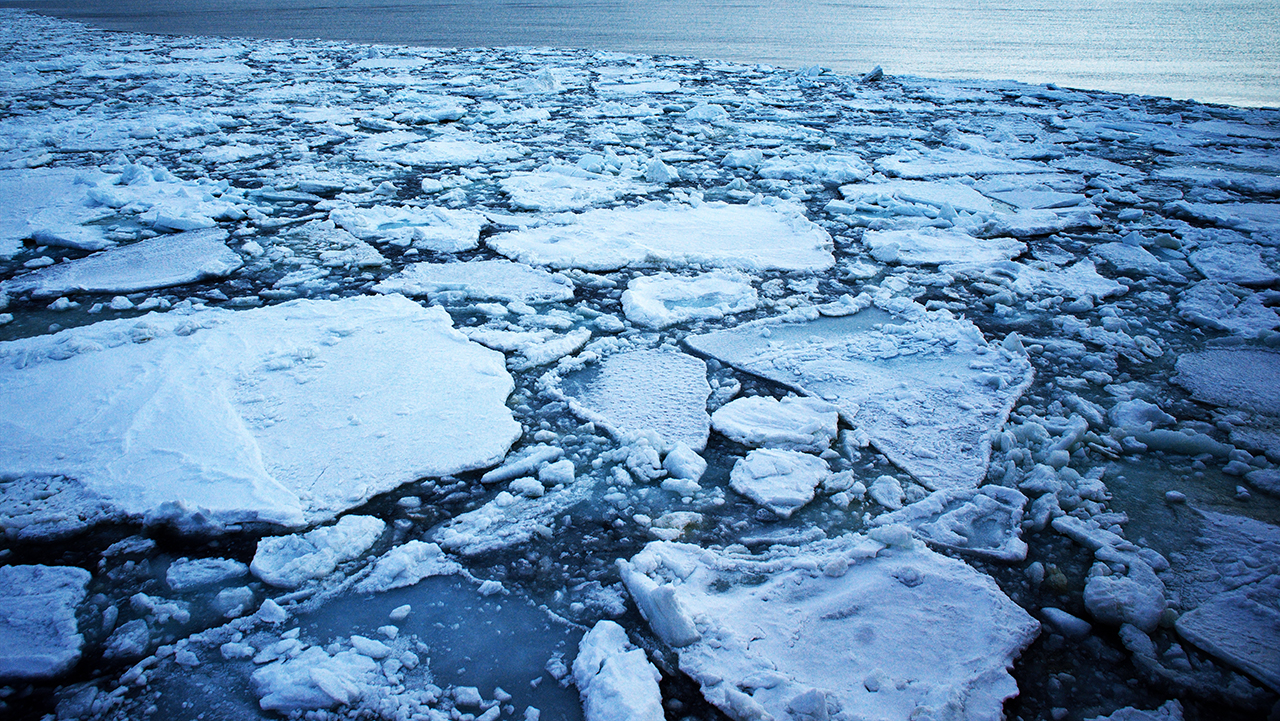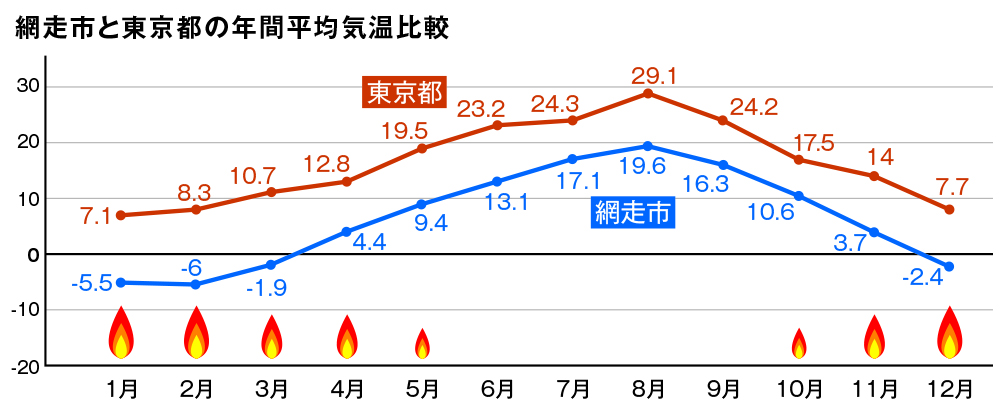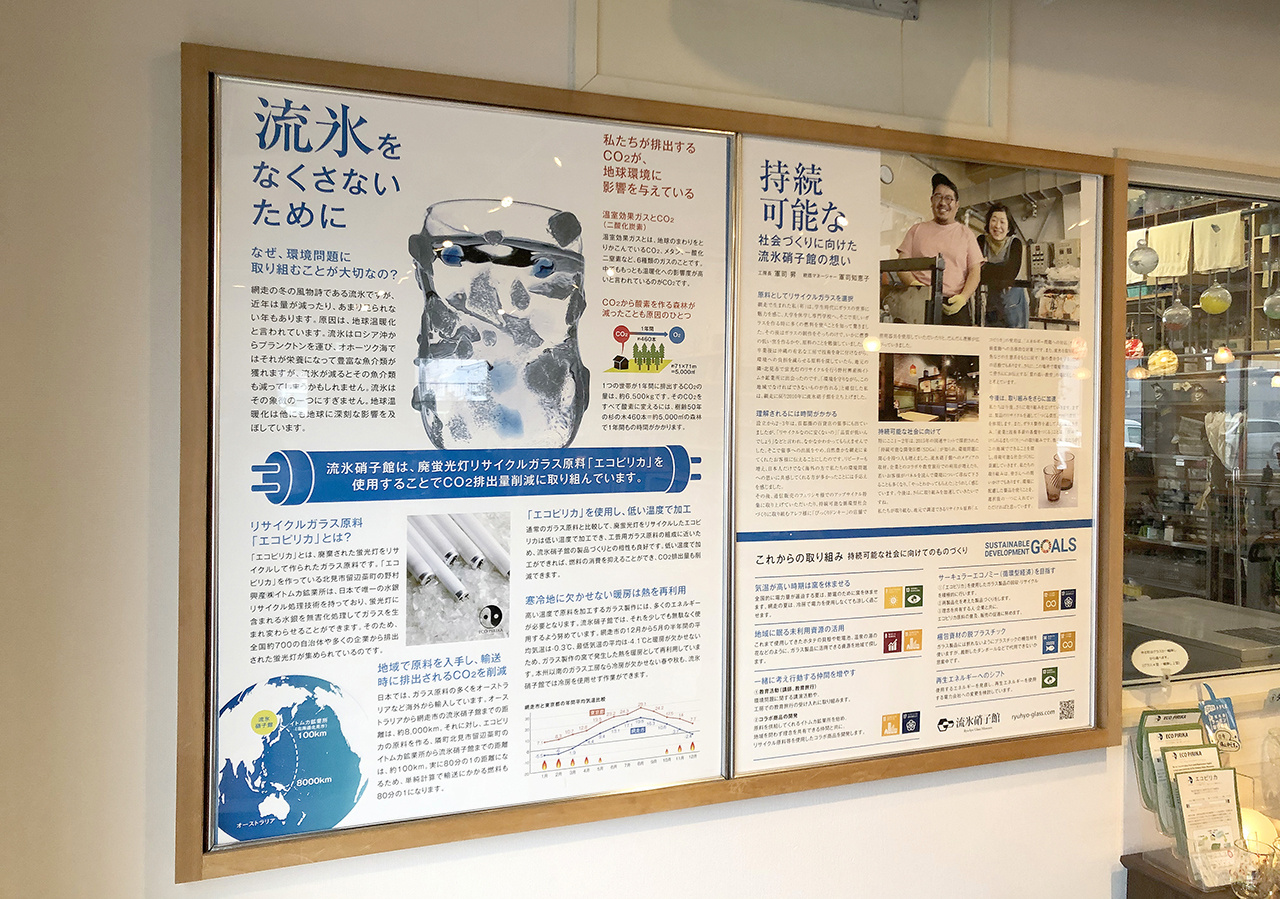流氷をなくさないために
網走の冬の風物詩である流氷ですが、近年は量が減ったりあまり見られない年もあります。原因は、地球温暖化と言われています。流氷はロシア沖からプランクトンを運び、オホーツク海ではそれが栄養になって豊富な魚介類が獲れますが、流氷が減るとその魚介類も減ってしまうかもしれません。流氷はその象徴の一つにすぎません。地球温暖化は他にも地球に深刻な影響を及ぼしています。
流氷硝子館は、
廃蛍光灯リサイクルガラス原料「エコピリカ」を使用することで
CO2排出量削減に取り組んでいます。
▶︎リサイクルガラス原料「エコピリカ」とは?
「エコピリカ」とは、廃棄された蛍光灯をリサイクルして作られたガラス原料です。「エコピリカ」を作っている北見市留辺蘂町の野村興産㈱イトムカ鉱業所は、日本で唯一の水銀リサイクル処理技術を持っており、蛍光灯に含まれる水銀を無害化処理してガラスを生まれ変わらせることができます。そのため、全国約700の自治体や多くの企業から排出された蛍光灯が集められているのです。
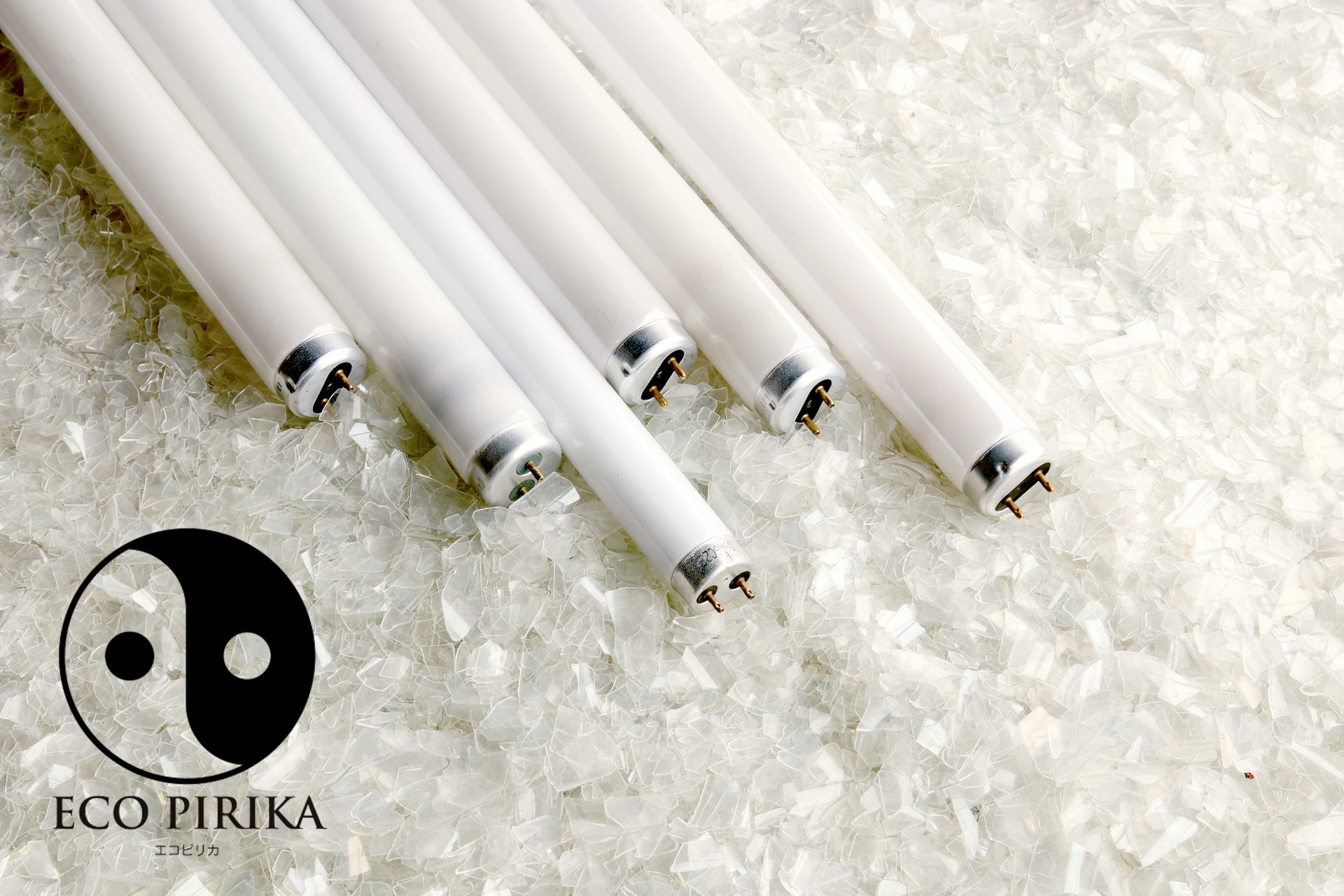
▶︎地域で原料を入手し、輸送時に排出されるCO2を削減
日本では、ガラス原料の多くをオーストラリアなど海外から輸入しています。オーストラリアから網走市の流氷硝子館までの距離は、約8,000km。それに対し、エコピリカの原料を作る、隣町北見市留辺蘂町のイトムカ鉱業所から流氷硝子館までの距離は、約100km。実に80分の1の距離になるため、単純計算で輸送にかかる燃料も80分の1になります。 
▶︎「エコピリカ」を使用し、低い温度で加工
通常のガラス原料と比較して、廃蛍光灯をリサイクルしたエコピリカは低い温度で加工でき、工芸用ガラス原料の組成に近いため、流氷硝子館の製品づくりとの相性も良好です。低い温度で加工ができれば、燃料の消費を抑えることができ、CO2排出量も削減できます。
▶︎寒冷地に欠かせない暖房は熱を再利用
高い温度で原料を加工するガラス製作には、多くのエネルギーが必要となります。流氷硝子館では、それを少しでも無駄なく使用するよう努めています。網走市の12月から5月の半年間の平均気温は-0.3℃、最低気温の平均は-4.1℃と暖房が欠かせないため、ガラス製作の窯で発生した熱を暖房として再利用しています。本州以南のガラス工房なら冷房が欠かせない春や秋も、流氷硝子館では冷房を使用せず作業ができます。
これからの取り組み ー持続可能な社会に向けてのものづくり
▶︎気温が高い時期は窯を休ませる
全国的に電力量が逼迫する夏は、節電のために窯を休ませます。網走の夏は、冷房で電力を使用しなくても涼しく過ごせます。
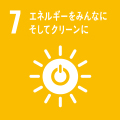
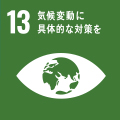
▶︎地域に眠る未利用資源の活用
これまで使用してきたホタテの貝殻や乾電池、温泉の湯の花などのように、ガラス製品に活用できる資源を地域で探します。
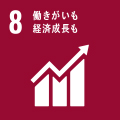
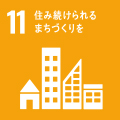
▶︎一緒に考え行動する仲間を増やす
①教育活動(講師、教育旅行) 環境問題に関する講演活動や、 工房での教育旅行の受け入れに取り組みます。 ②コラボ商品の開発 原料を供給してくれるイトムカ鉱業所を始め、 地域を問わず理念を共有できる仲間と共に、 リサイクル原料等を使用したコラボ商品を開発します。
▶︎サーキュラーエコノミー(循環型経済)を目指す
①「エコピリカ」を使用したガラス製品の回収・リサイクルを積極的に行います。 ②再製品化を考えた製品づくりをします。 ③理念を共有する人・企業と共に、 エコピリカ原料の普及、販売の促進に努めます。

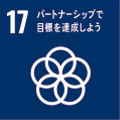
▶︎梱包資材の脱プラスチック
ガラス製品には割れないようにプラスチックの梱包材を使いますが、裁断したダンボールなどで代用できないか思案中です。

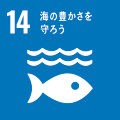
▶︎再生エネルギーへのシフト
使用するエネルギーを見直し、再生エネルギーを使用する電力会社を利用する。(2021年5月切り替え済)


Preventing the loss of drift ice
Drift ice is a winter tradition in Abashiri; however, in recent years, the amount of drift ice has drastically decreased and rarely seen in some years. The cause is said to be global warming. Drift ice brings plankton from the coast of Russia, which nourishes the Sea of Okhotsk, and allows us to catch an abundance of fish and shellfish. Less drift ice may reduce the overall haul of seafood. The loss of drift ice is just one of the symbols of global warming which is wreaking havoc on earth.
The Ryuhyo Glass Museum is working to reduce CO2 emissions by using “Eco Pirika,” the raw material for glass making that has been recycled from fluorescent lamp waste
What is Eco Pirika?
Eco Pirika is the raw material made by recycling discarded fluorescent lamps. Nomura Kohsan Co., Ltd. Itomuka Plant in Rubeshibe-cho, Kitami City, which is the company that makes Eco Pirika, has the only mercury recycling technology in Japan that detoxifies mercury contained in fluorescent lamps to regenerate glass. The company collects fluorescent lamps discarded from about 700 municipalities and many companies nationwide.
Utilizing local raw materials to reduce CO2 emissions during transportation.
In Japan, most of the raw materials for glass making are imported from countries such as Australia. The distance from Australia to the Ryuhyo Glass Museum in Abashiri is about 8,000km, while the distance from the Itomuka Plant in the neighboring town of Rubeshibe in Kitami City, where Eco Pirica is made, to the Ryuhyo Glass Museum is about 100 km. Since the difference in distance is actually 1/80, the fuel required for transportation will also come to 1/80 by simple calculation.
Using Eco Pirika to process at lower temperatures
Compared to ordinary raw materials for glass making, Eco Pirika, which is recycled from fluorescent lamps, can be processed at a lower temperature and has a composition similar to that of the raw materials making it a good match for the products at the Ryuhyo Glass Museum. Since it can be processed in lower temperatures, fuel consumption as well as CO2 emissions can be reduced.
Reusing heat for warmth which is essential in cold regions
Glass production requires a lot of energy to process raw materials at high temperatures. At the Ryuhyo Glass Museum, we strive to use as little energy as possible. The average temperature in Abashiri during the six-month period from December to May is -0.3℃, and the average minimum temperature is -4.1℃ which makes it hard to survive without indoor heating. We conserve energy by using the heat generated in the kiln for our indoor heating. On the other hand, as for spring and autumn, when air conditioning is essential for glasswork studios in the south of Honshu, the Ryuhyo Glass Museum can work without air conditioning due to cool temperatures.
Our future efforts
-Manufacturing for a sustainable society
Resting the kiln during the warmer seasons
In the summer when the amount of electricity is tight nationwide, we make a conscious decision to close our kiln to save electricity. Abashiri’s summers are cool enough to endure without the use of electricity for air conditioning.
Utilizing unused resources lying dormant in the region
We strive to search for resources that can be used for our glass products in the region. So far, we have used materials such as scallop shells, batteries and mineral deposits from hot springs.
Gathering minds to take action for our common goal
(1) Educational activities (lecturers, educational trips)
We will hold lectures on environmental issues and accept educational trips at the workshop.
(2) Development of collaborative products
We will develop collaborative products using recycled materials, etc., together with colleagues who can share our philosophy regardless of region, including the Itomuka Plant which supplies raw materials.
Aiming for a Circular Economy
(1) We will actively collect and recycle glass products that use Eco Pirika.
(2) We will make products that may be remanufactured.
(3) We will work together with people and companies that share our philosophy to promote the use and sale of Eco Pirika materials.
De-plasticizing packaging materials
We are currently using plastic packaging for our glass products to prevent them from breaking, but we are exploring ideas such as using cardboard instead.
Shifting to renewable energy
We are in the process of reviewing our energy usage and considering changing to a power company that uses renewable energy.


